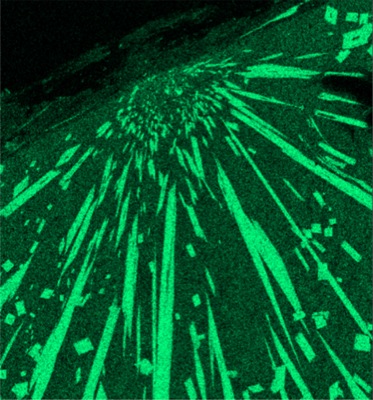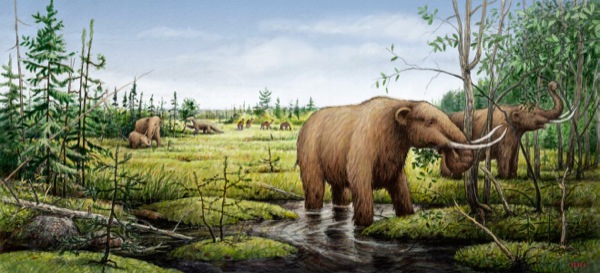


Prehistoric climate change
Cosmic crash in Canada may have caused global climate shift 12,900 years ago
8:56 a.m., Sept. 4, 2013--A dramatic global climate shift may be linked to the impact of an asteroid or comet in Quebec, according to researchers from the University of Delaware, Dartmouth College and Elizabeth City State University.
The findings appear in the Sept. 2 online Early Edition of the Proceedings of the National Academy of Sciences (PNAS).
Research Stories
Chronic wounds
Prof. Heck's legacy
According to the scientists’ hypothesis, the impact occurred about 12,900 years ago at the beginning of the Younger Dryas period and marked an abrupt global change to a colder, drier climate with far-reaching effects on both animals and humans. In North America, many big animals vanished, including mastodons, camels, giant ground sloths and saber-toothed cats.
It is not disputed that these powerful environmental changes occurred, but there has long been controversy over their cause. The classic view of the Younger Dryas cooling interlude has been that an ice dam in the North American ice sheet ruptured, releasing a massive quantity of freshwater into the Atlantic Ocean. The sudden influx is thought to have shut down the ocean currents that move tropical water northward, resulting in the cold, dry climate of the Younger Dryas.
But the researchers discovered new evidence linking an extraterrestrial impact with this environmental transformation. The report focuses on spherules, or droplets of solidified molten rock expelled by the impact of a comet or meteor.
“Malcolm LeCompte of Elizabeth City State University and I were intrigued by the widespread presence of these enigmatic spherules,” said co-author Mark Demitroff, a geography doctoral student in UD’s College of Earth, Ocean, and Environment. “Last October we documented in PNAS their Younger Dryas abundance at three meticulously dated Clovis sites in Maryland, South Carolina and New Mexico. Dartmouth invited us to help shed light on the problem. Something unusual apparently happened here to interrupt the warming trend that marked the end of the last ice age.”
The spherules in question were recovered from Younger Dryas boundary layers at sites in Pennsylvania and New Jersey, the layers having been deposited at the beginning of the period. The geochemistry and mineralogy profiles of the spherules are identical to rock found in southern Quebec, where the researchers argue the impact took place.
Similar microspherules (about half the width of a human hair) have been correlated with other cosmic impacts over geologic time and have been found in Younder-Dryas-dated strata at many sites in different parts of the world.
There is a known impact crater in Quebec — the 4-kilometer wide Corossal crater — but based on the team’s mineralogical and geochemical studies, it is not the impact source for the material found in Pennsylvania and New Jersey.
“The Younger Dryas cooling impacted human history in a profound manner,” said Dartmouth Professor Mukul Sharma, a co-author of the study. “Environmental stresses may also have caused Natufians in the Near East to settle down for the first time and pursue agriculture.”
Photo courtesy of Mukul Sharma
Illustration by Barry Roal Carlsen, University of Wisconsin









